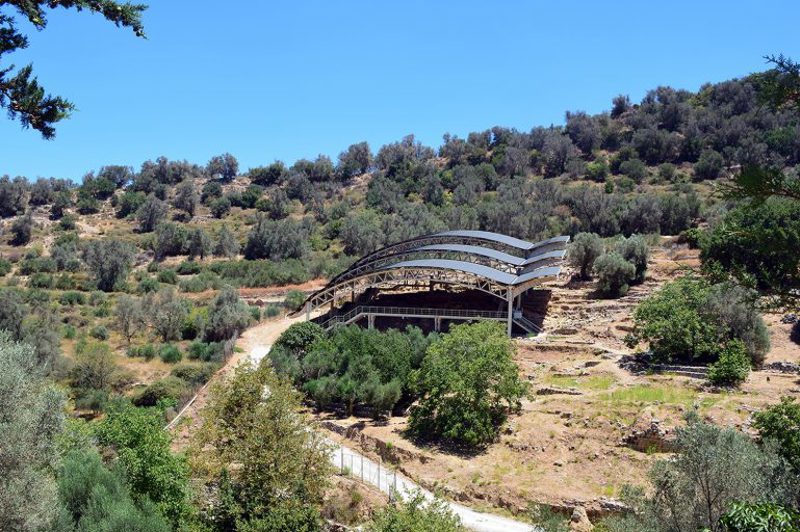
For history buffs, a visit to the Rethymno region must include a stop at Ancient Eleftherna, a fascinating archaeological site as important historically as Knossos. The site lies just a few kilometres from Arkadi, so combining a trip to Arkadi Monastery with Eleftherna is easy. Margarites, the village celebrated for its pottery, is also close by.
It’s believed the ancient city was built in the Geometric period, 970-820 BC and was constructed on a hill enclosed by a wall, much of which remains today. Today the excavated site resembles a vast stone ship pointing its prow towards the northwest, set amongst olive trees and vines. On the northern side sits a temple, believed to be dedicated to the god Apollo, which was later used by Christians for religious purposes. Sculpted tombs in the cliffs nearby and carved sarcophagi give an insight into the prosperous society that flourished here during Roman and Early Byzantine times.
Once a powerful independent city, Eleftherna’s entrepreneural citizens practiced agriculture and trade, and used the bay of Fodele to export their goods by sea.
The city’s prosperity meant that it even minted its own coins in the fourth century BC. But commercial success brought conflict too, and 100 years later the city fought against Rhodes and its ally Knossos as it battled for its independence. In 68 BC, the city was conquered by the Romans, and so began a new chapter in its story which saw it become a centre of Christian worship through to the Byzantine era.
The Museum of Ancient Eleftherna opened in 2016 and houses a vast and fascinating collection that provides rich insights into the story of the ancient city throughout its many incarnations. Spanning a period of three and a half millennia (3000 BC to 1300 AD) the museum’s exhibits include objects from Prehistoric, Geometric, Archaic, Classical, Hellenistic, Roman and Byzantine times.
According to a legend, the city took its title from Greek mythology, and was named after Eleftheras, one of the ‘Kouretes’ – the mythological dancers who protected the infant Zeus (born on Crete’s highest mountain Psiloritis) by striking their bronze shields – so preventing Zeus’s father Cronus from hearing his cries and devouring him.
British archaeologist Humfry Payne, of the British School in Athens, was one of the first archaeologists to excavate at Eleftherna in 1929. Further digs by the University of Crete, which began in the 1980s, have regularly revealed new archaeological remains of the city ever since.



















